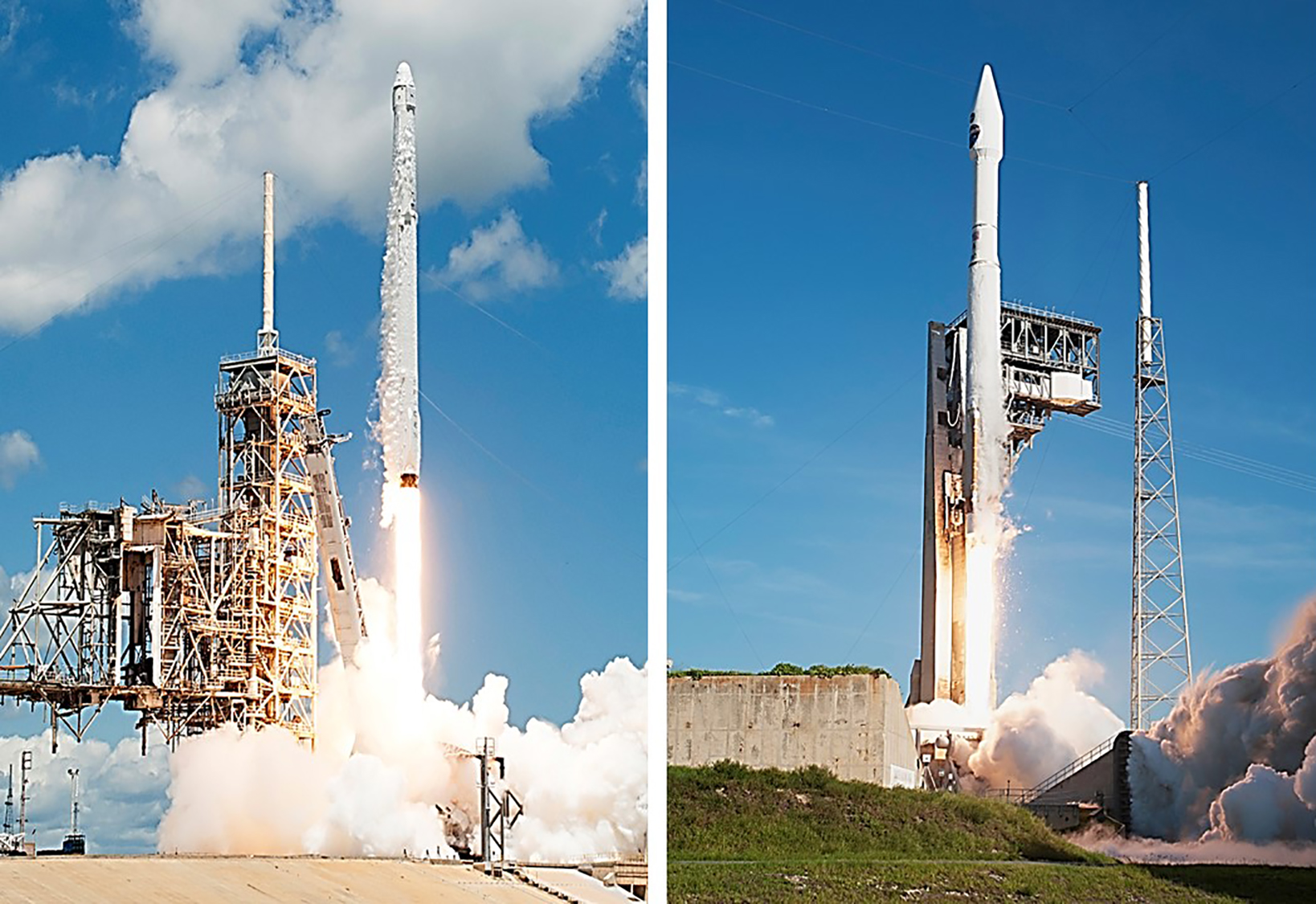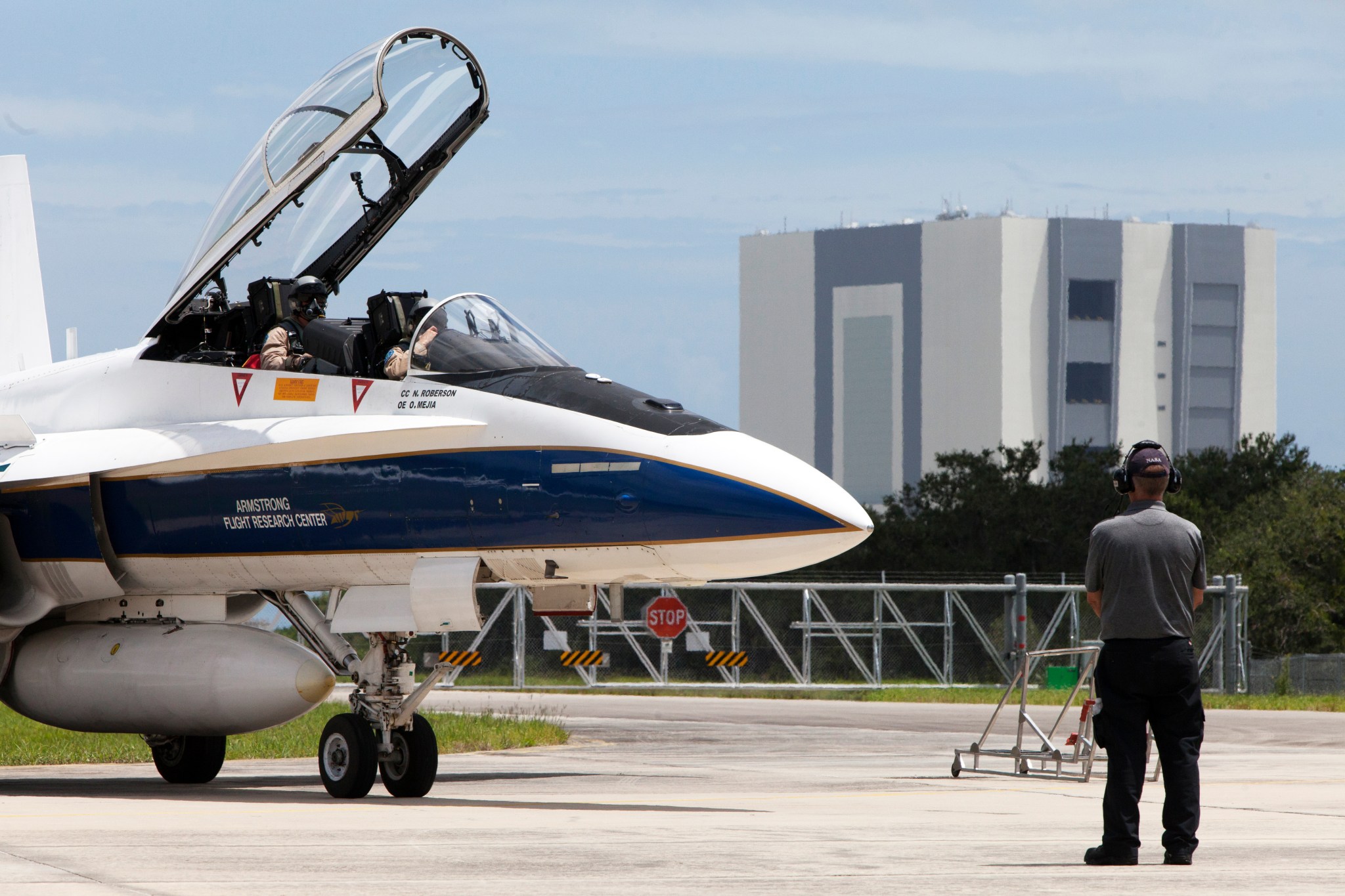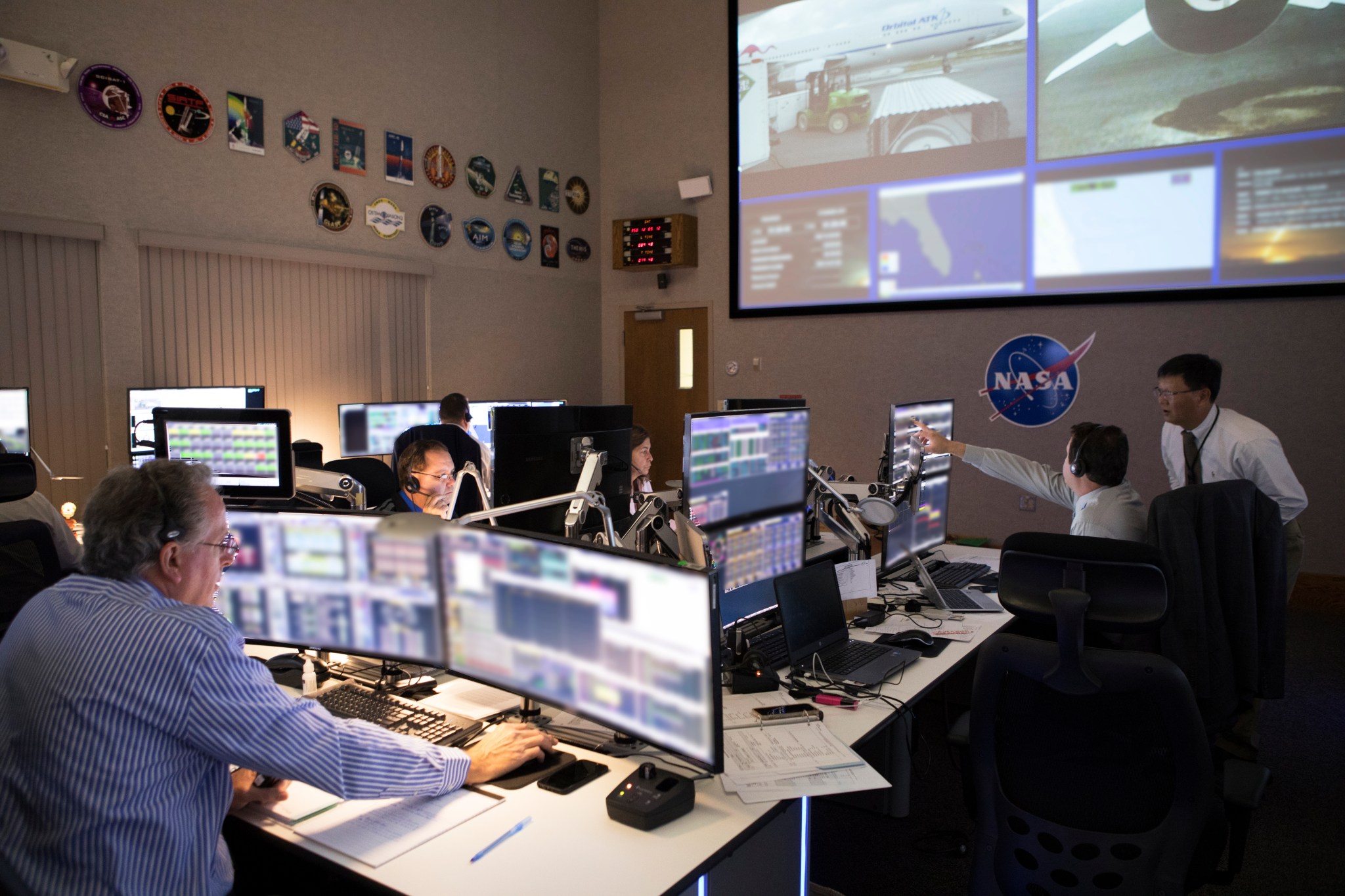


By Bob Granath
NASA’s Kennedy Space Center, Florida
On Aug. 14, 2017, a SpaceX Dragon spacecraft was launched atop a Falcon 9 rocket from Launch Complex 39A at NASA’s Kennedy Space Center in Florida. It was a commercial resupply mission delivering supplies to the International Space Station. Four days later, the agency’s Tracking and Data Relay Satellite-M lifted off on a United Launch Alliance Atlas V from Space Launch Complex 41 at Cape Canaveral Air Force Station.
This kind of diverse activity is typical at a multi-user spaceport.
For nearly a half-century, Kennedy operated as a NASA-only space center. Originally constructed to support the Apollo Program, facilities were built to prepare rockets and spacecraft for the lunar landing effort. In the mid-1970s, many buildings were converted for the Space Shuttle Program and new ones added.
As the shuttle program came to an end and Kennedy began preparing to support NASA’s Space Launch System rocket and Orion spacecraft, it became apparent NASA would no longer need some of the existing facilities. But the anticipation of an emerging commercial space industry resulted in center leadership developing an innovative concept of a multi-user spaceport to change focus from a big government, NASA-only space center to the agency partnering with other organizations.
In 2015, Kennedy met the objective of becoming a premier, multi-user spaceport.
According to Tom Engler, director of Center Planning and Development at Kennedy, the impact of having multiple partners working together at Kennedy is the result of creating an environment where both commercial and governmental space processing and launch activities are able to operate side by side.
“This serves to enhance the overall success of all entities here at Kennedy because of the ability to cooperate and help each other out,” he said. “With four separate and distinct human spaceflight development activities occurring at the same time, it has created an environment that is unparalleled anywhere in the world.”
The spaceflight development activities include not only the Orion spacecraft and SLS rocket, but Commercial Crew Program spacecraft — Boeing’s CST-100 Starliner and the SpaceX Crew Dragon as well as the development of the Blue Origin New Glenn launch vehicle.
“It’s real — Kennedy is a multi-user spaceport,” said Greg Gaddis, the center’s master integrator. “Our job is to make sure everyone is successful.”
The Customer Service and Integration Branch of Spaceport Integration and Services helps ensure success through situational awareness into the diverse organizations’ daily activities.
According to Gaddis, a key element of coordination is a way to maintain situational awareness.
“We created SIMS — the Spaceport Integrated Master Schedule, a process tool,” he said. “It helps us coordinate activities on a day-to-day basis.”
According to the SIMS document, it establishes processes and supporting products in planning operations and activities for all spaceport partners, ensuring efficient use of resources and providing insight into one activity getting in the way of another.
“We are excited to have the partners that currently reside here at Kennedy and are looking to include more partners into the family,” Engler said.
“More growth will require more integration,” Gaddis said. “It’s all about living and working at a multi-user spaceport.”
Click here for the full story on living and working at the premier, multi-user spaceport.

























